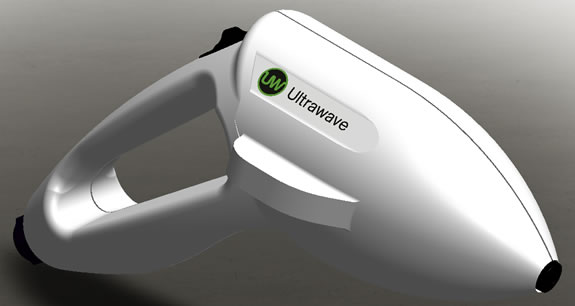Ultrasound cleaning shakes off infection risk
Researchers from the University of Southampton have demonstrated how a pioneering ultrasonic device can significantly improve the cleaning of medical instruments and reduce contamination and risk of infection. StarStream, invented and patented by the University of Southampton and in commercial production by Ultrawave Ltd., makes water more efficient for cleaning by creating tiny bubbles which automatically scrub surfaces.
The device supplies a gentle stream of water through a nozzle that generates ultrasound and bubbles, which dramatically improve the cleaning power of water reducing the need for additives and heating.
Using just cold water, StarStream was able to remove biological contamination, including brain tissue from surgical steel. Cleaning instruments between patients is critical to avoid transmission of agents leading to conditions such as Creutzfeldt-Jakob Disease. It was also able to remove bacterial biofilms that typically cause dental disease and was effective at removing soft tissue from bones, which is required prior to transplants to prevent rejection of the transplanted material by the recipient’s immune system.
Principal Investigator Professor Tim Leighton, from the University’s Institute of Sound and Vibration Research, said: “In the absence of sufficient cleaning of medical instruments, contamination and infection can result in serious consequences for the health sector and remains a significant challenge. Our highly-effective cleaning device, achieved with cold water and without the need for chemical additives or the high power consumption associated with conventional strategies, has the potential to meet this challenge and transform the sector.”
The research, published in the journal Physical Chemistry Chemical Physics, was funded by the Royal Society Brian Mercer Award for Innovation. The device has won numerous awards, including the 2014 ‘Best New Product of the Year’ from S-lab and the 2012 Institute of Chemical Engineering Award for Water Management and Supply.
Professor Leighton added: “We are very grateful to the Royal Society Brian Mercer Fund (who granted their 2011 Award for Innovation jointly to myself and Dr Peter Birkin) for giving us the opportunity to use fundamental research to prove the effectiveness of StarStream, whilst at the same time exploring ways to commercialise it. Commercialisation is vital: if we cannot build a business that can sell thousands of these to health providers at a price they find attractive, this invention will stay in the laboratory and help no-one.”
The team that conducted the study now forms the basis of the University’s Network for Anti-Microbial Resistance and Infection Prevention (NAMRIP) Strategic Research Group, which hosts over 100 members under the chairmanship of Professor Leighton.

Starstream supplies a gentle stream of water through a nozzle that generates ultrasound and bubbles
StarStream’s effectiveness was further demonstrated with the publication of two additional papers – further results on its effectiveness against dental biofilms were published in the Journal of Dental Research, while the device’s ability to clean skin models was published in Physical Chemistry Chemical Physics.







